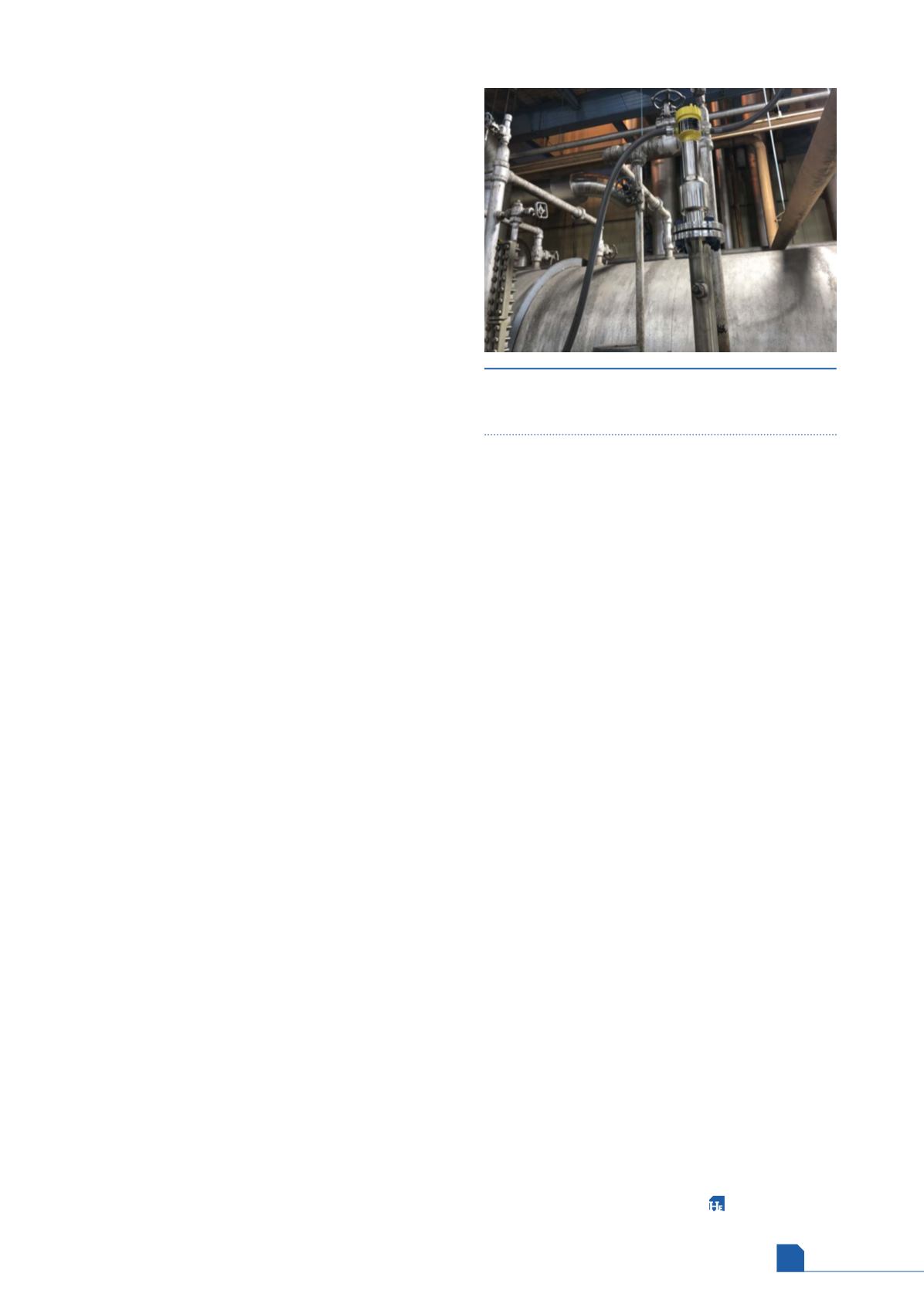
July
2020
HYDROCARBON
ENGINEERING
53
Differential pressure sensors have been around a long
time, and the measurement is a versatile, widely used
technology for all types of applications, including many
steam boiler applications around the world. However, many
operations only run their steam boiler at a fraction of their
full capacity because of the potential inaccuracies
associated with the level measurement. With a different
technology providing a better level measurement, steam
boilers can operate more efficiently and more safely.
Guided wave radar: improvements in
an evolving technology
Guided wave radar repeatedly sends low amplitude,
high-frequency microwave pulses at the speed of light along
a probe, and the device calculates distance by measuring the
time it takes for the pulse to reach the surface of the fluid
and return. The time-of-flight level formula is as follows:
d = (s
•
t) / 2
Where:
d = distance (level).
s = speed.
t = time.
As long as the speed of light remains a constant,
measurements with guided wave radar are only influenced
by the dielectric constant, or reflective properties, of the
fluid the sensor is measuring. Fluids with a higher dielectric
constant will return a stronger signal to the sensor
electronics while fluids with lower dielectric constants
become more difficult to measure.
Under ambient conditions, water has a relatively high
dielectric constant, so guided wave radar can easily
measure level. As water temperature and pressures are
raised inside a boiler, water’s dielectric constant drops by as
much as 75%, but this significant drop has little to no effect
on the return signal and the resultant measurement output.
If the only activities inside a boiler were rising
temperatures and pressures, a guided wave radar capable of
withstanding those conditions would be the ideal
technology for steam boilers. However, as water inside the
boiler is heated and pressurised, the airspace within is
replaced with saturated steam, and saturated steam has
different properties than the air it is replacing.
The small change between air and saturated steam is
significant enough to slow down the microwave signal and
alter the measurement output. Since level measurements
with guided wave radar are calculated using the signal’s
time-of-flight, any unaccounted change in speed through
the air space will result in a measurement error and
significant underutilisation of the steam boiler.
Fortunately, instrumentation manufacturers have made
significant advancements in guided wave radar technology
to overcome errors like these and maximise level
measurement accuracy inside steam boilers. Compensating
for a known measurement error due to a change in the
signal speed is simply a matter of knowing how much
slower the signal is travelling and adjusting for the change
in speed.
To determine the guided wave radar’s change in signal
speed, VEGA guided wave radars use steam compensation
technology. A small section near the top of the measurement
probe is used to constantly evaluate how much slower the
signal is travelling. By doing this, the sensor electronics knows
how much slower the microwave signal is travelling down the
probe and through the saturated steam.
The sensor electronics uses the change in speed and
applies the slower speed to the entire measurement span,
compensates for the change, and outputs an accurate level
measurement. This adjustment happens in real-time with each
signal transmission, ensuring an accurate continuous level
measurement, even during startup and shutdown.
When this technology is applied correctly, the reference
section simultaneously verifies the instrument’s speed
calculation and provides a more reliable, more accurate
measurement. This technology is much less susceptible to
measurement errors based on the changing conditions inside a
steam boiler.
Conclusion
Accurate level measurements and steam boiler safety go hand
in hand. Choosing a level measurement technology that can
provide reliability and accuracy during each step of a boiler’s
operation is of the utmost importance. Understanding a
measurement technology’s operating principle is the first step
in making a well-informed decision.
While differential pressure is an adequate method for level
measurement in a steam boiler, changing densities in the air
space make this method less accurate and, therefore, less
reliable throughout each phase of a boiler’s operation.
Conversely, guided wave radar is unaffected by the changing
conditions inside a steam boiler due to the technological
advancements that have been made to address the challenges
of saturated steam.
By adding a guided wave radar to their steam boiler,
operators can improve their ability to accurately track level
throughout each phase of the boiler’s operation, enhancing
safety and efficiency. After all, accurate and reliable level
measurements can empower operators to run steam boilers at
peak efficiency to save on energy costs.
Figure 3.
The VEGAFLEX 86 guided wave radar is
easily mounted to a bypass chamber using a flange
connection.








